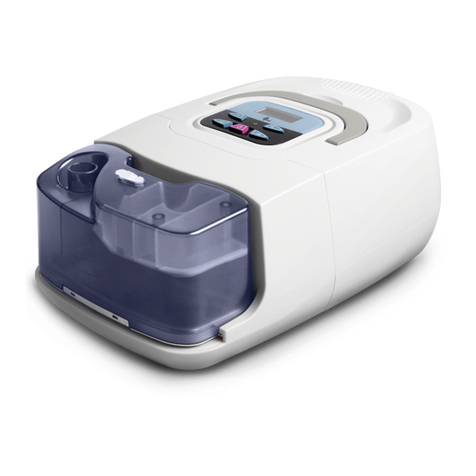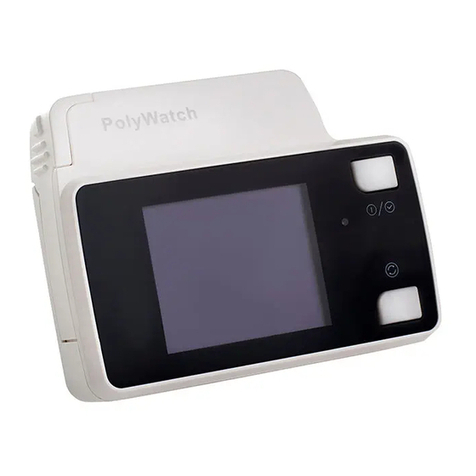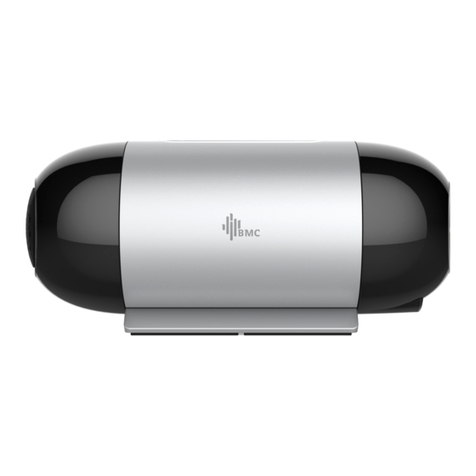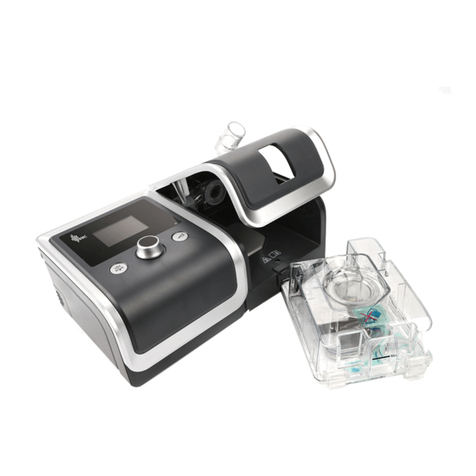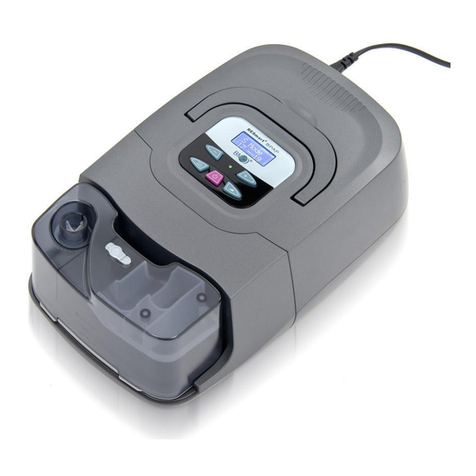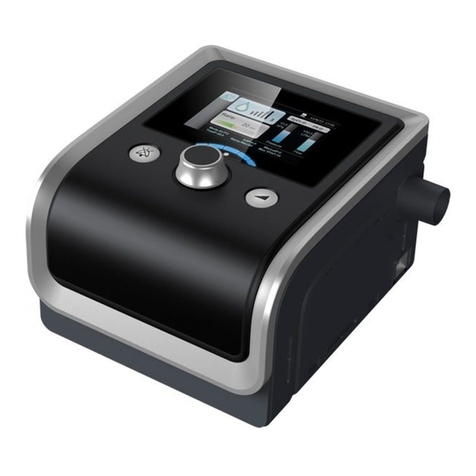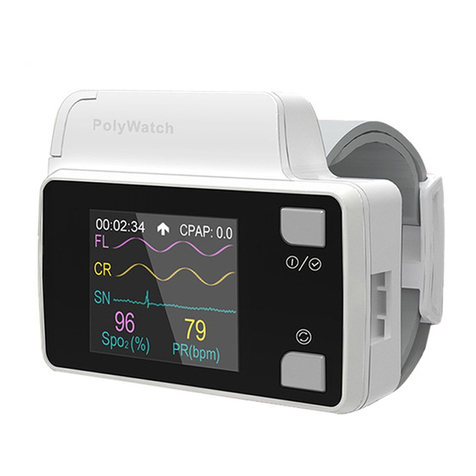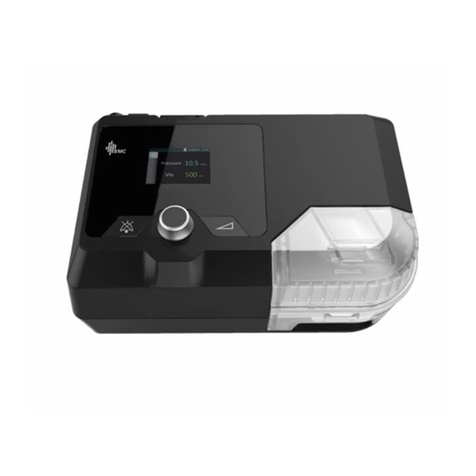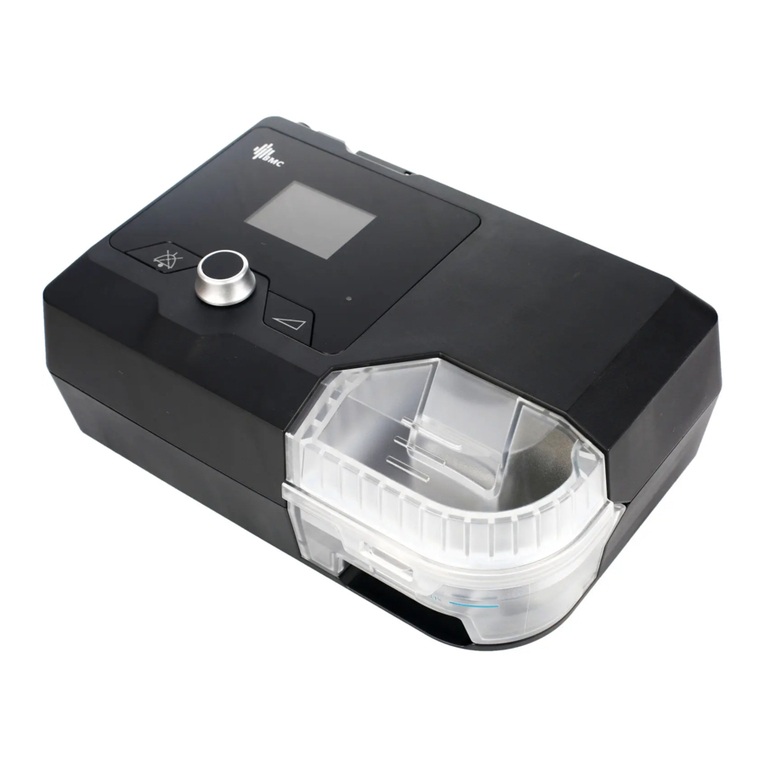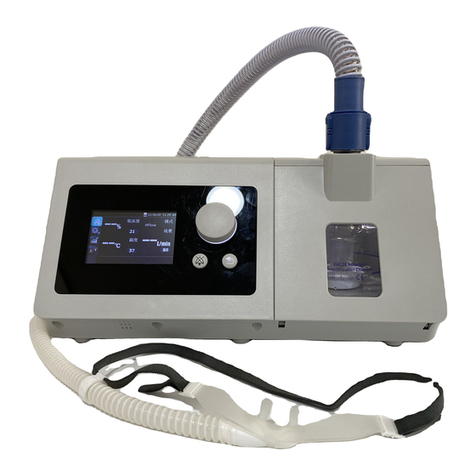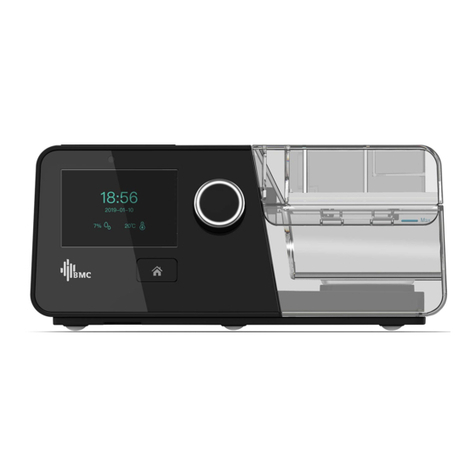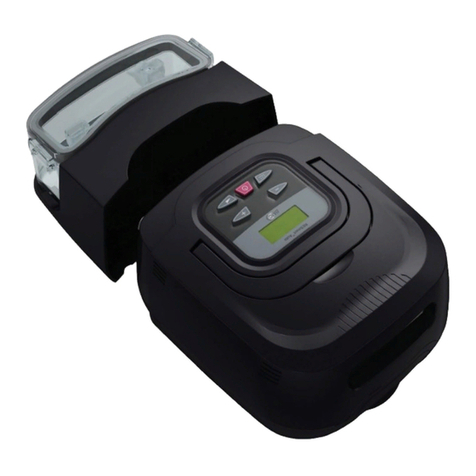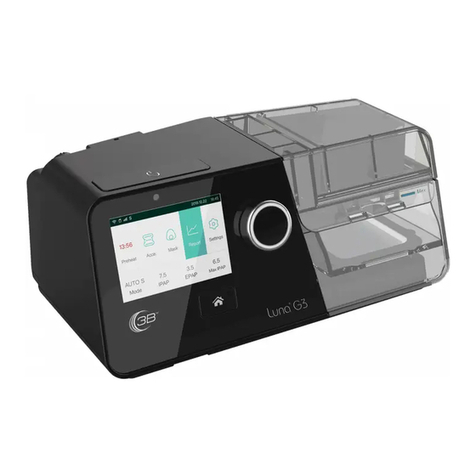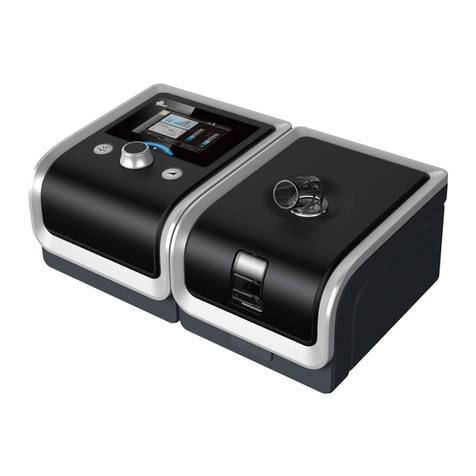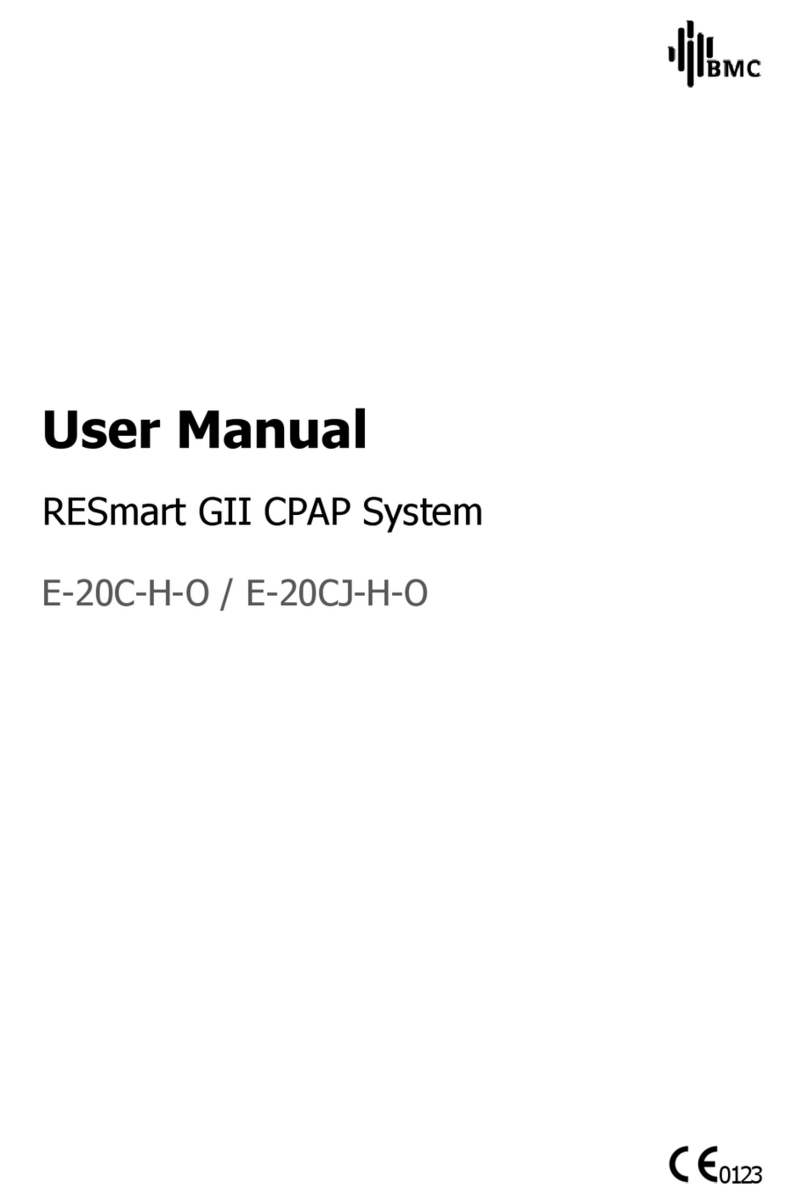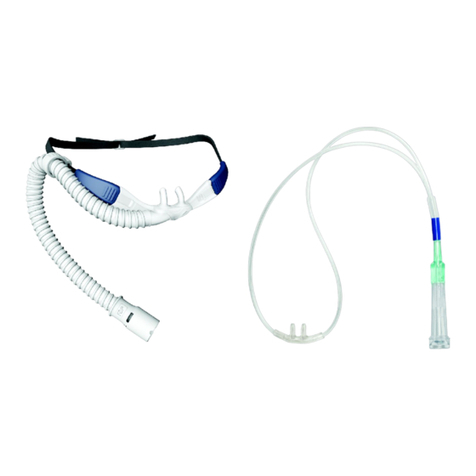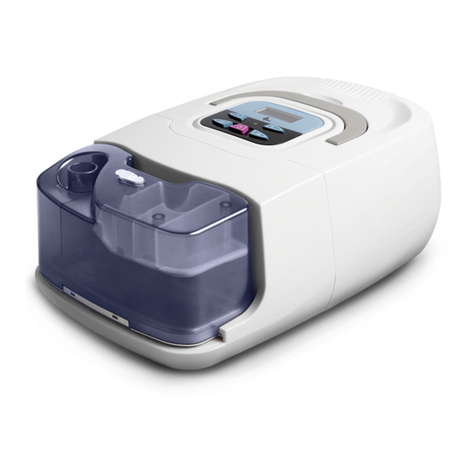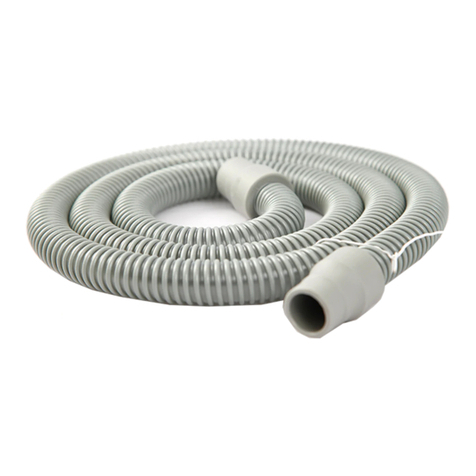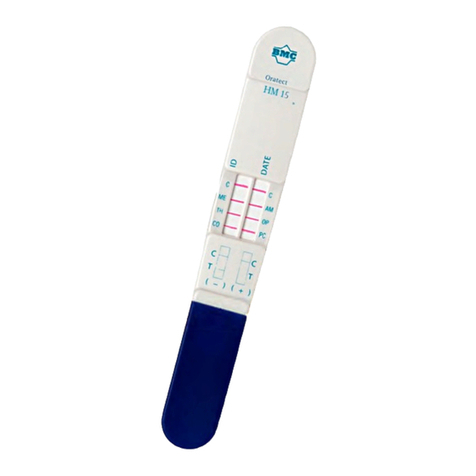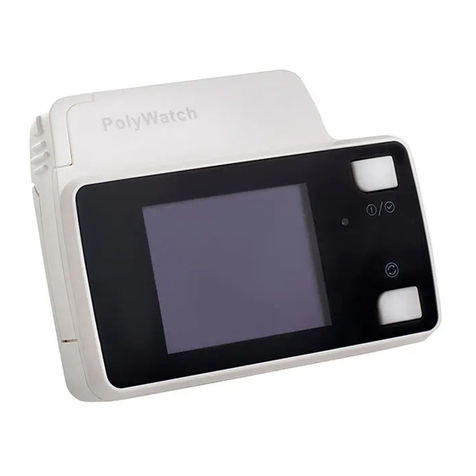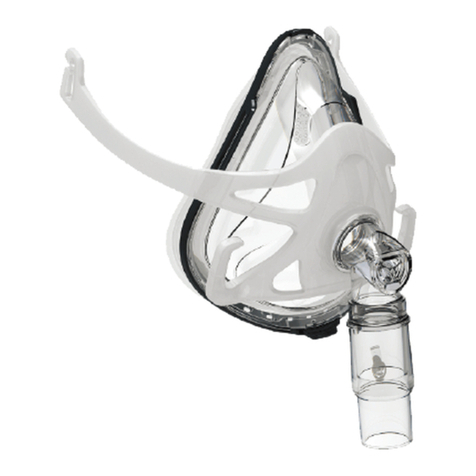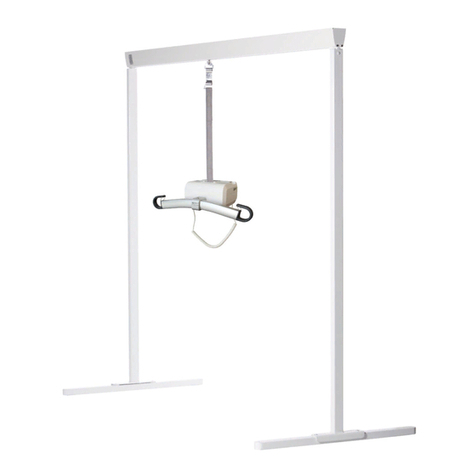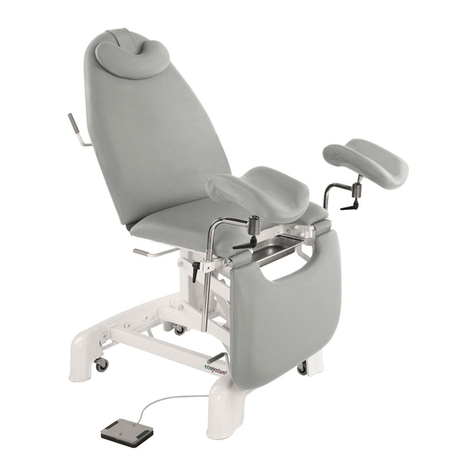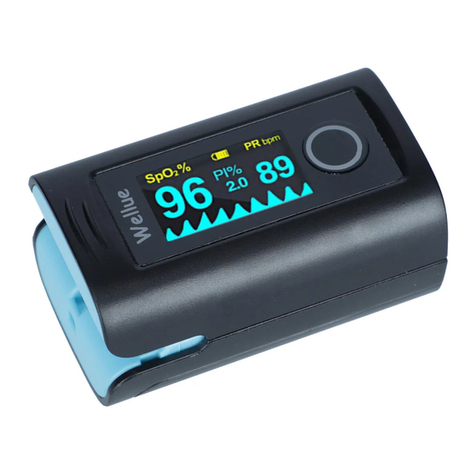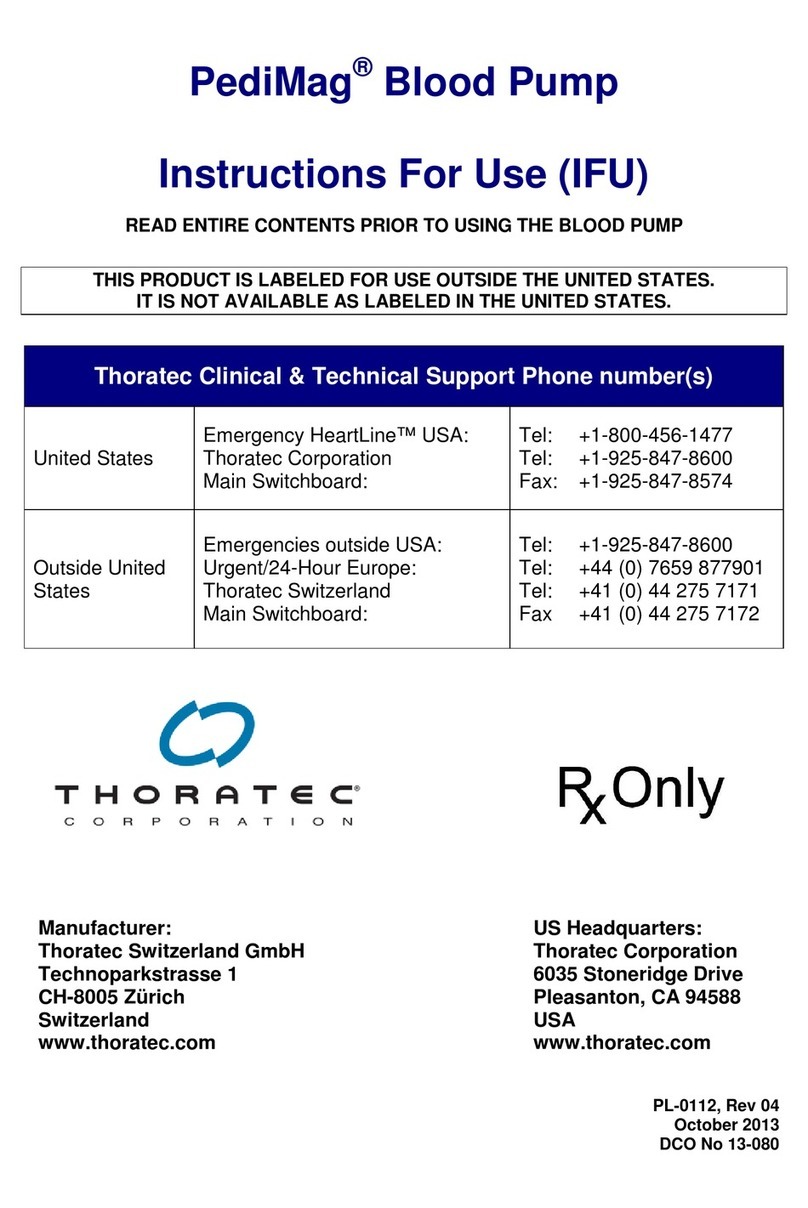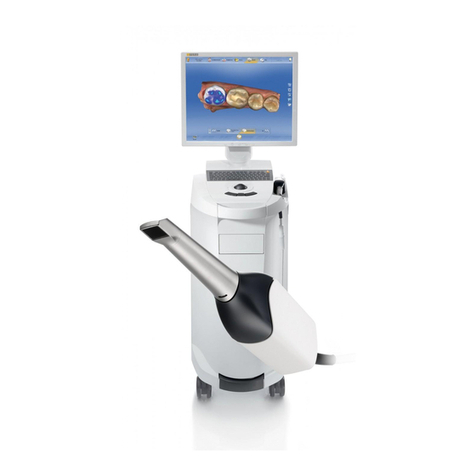BMC Polymate YH-1000C User manual

Polymate®YH-1000C
Polysomnograph
User Manual
0123

Polymate
®
YH-1000C Polysomnograph User Manual V3.1
Table of Contents
CHAPTER 1: OVERVIEW ................................................................................................1
1.1 Package Contents .........................................................................................................1
1.2 Recorder Profile ...........................................................................................................2
1.3 Symbols........................................................................................................................3
CHAPTER 2: INTRODUCTION.......................................................................................4
2.1 Intended Use.................................................................................................................4
2.2 Warnings.......................................................................................................................4
2.3 Cautions........................................................................................................................6
2.4 Contraindications .........................................................................................................7
2.5 Electromagnetic Compatibility ....................................................................................7
CHAPTER 3: CONTROL PANEL.....................................................................................8
CHAPTER 4: INSTALLATION AND SETUP ................................................................10
4.1 Installation..................................................................................................................10
4.1.1 Installation the Battery.............................................................................. 10
4.1.2 Connecting of the Sensors to the Recorder ............................................. 10
4.1.3 Applying the Sensors to Patient ............................................................... 11
4.2 Instructions for Recorder............................................................................................13
4.2.1 Turn on/off the Recorder .......................................................................... 14
4.2.2 Recorder Information ............................................................................... 14
4.2.3 Stop Record ............................................................................................. 18
CHAPTER 5: CLEANING AND MAINTENANCE.......................................................19
5.1 Cleaning and Maintenance.........................................................................................19
5.2 Disinfect/ Sterilization................................................................................................20
5.3 Disposal......................................................................................................................20
CHAPTER 6: TROUBLESHOOTING.............................................................................21
CHAPTER 7: SPECIFICATION ......................................................................................22
7.1 Physical Specifications...............................................................................................22
7.2 Features ......................................................................................................................22
7.3 Specifications.............................................................................................................22
7.4 Condition of Operating, Transport and Storage.........................................................23
CHAPTER 8: EMC REQUIREMENTS...........................................................................24
CHAPTER 9: LIMITED WARRANTY ...........................................................................27
CHAPTER 10: POLYLOGIC®ANALYSIS SOFTWARE FOR POLYSOMNOGRAPH28
10.1 Software Installation ................................................................................................28

Polymate
®
YH-1000C Polysomnograph User Manual V3.1
10.1.1. Install Analysis Software ....................................................................... 28
10.1.2. Install the USB driver ............................................................................ 32
10.2 Collaborated Work and Analysis Data .....................................................................38
10.2.1. Data reception....................................................................................... 38
10.2.2. Data file management ........................................................................... 41
10.2.3. Data playback ....................................................................................... 42
10.2.4. Print preview and output ....................................................................... 50
10.2.5. Help....................................................................................................... 51
10.2.6. Exit program.......................................................................................... 52

Polymate
®
YH-1000C Polysomnograph User Manual V3.1
About
This manual offers the instructions for installation, using and maintenance of YH-1000C
Polysomnograph. This manual is only used by professional sleep lab or physician.
Please read this manual before using the device, to make sure operating safely.
Copyright
The copyright of this manual is belongs to BMC Medical Co., Ltd.
Only BMC Medical Co., Ltd. has the explanation right of this manual.
Issue date:Nov 30,2012

Polymate
®
YH-1000C Polysomnograph User Manual V3.1
1
CHAPTER 1: OVERVIEW
Product Name:Polysomnograph
Model:YH-1000C
1.1 Package Contents
Your Polymate®System should include the following articles. If any of these items are not
included, contact a BMC representative.
No. Articles Num. N/O
1 Recorder Host 1 N
2 Oral and Nasal Airflow Cannula 1 N
3 SpO2Sensor 1 N
4 Body Position, Snoring, Chest and Abdomen effort
Cable
1 N
5 CPAP Pressure Cannula 1 O
6 USB Data Cable 1 N
7 Body Position Belt 1 N
8 User Manual 1 N
9 Sheath 1 N
10 Software CD 1 N
11 Tape 1 N
Note: O=Optional; N=Normal

Polymate
®
YH-1000C Polysomnograph User Manual V3.1
2
1.2 Recorder Profile
The recorder is a small, lightweight diagnostic sleep recorder. The unit measures 140mm x 80mm
x 32mm and weighs 360 grams (with battery).
Front
Side
Bottom
The Polymate®uses sensors to record oxygen saturation, pulse rate, airflow, respiratory effort,
snore, and body position in a supervised (hospital/institutional) or unsupervised (home)
environment. It is capable of recording at least 8 consecutive hours of patient data. Serial cables
allow the Polymate®to transfer the data from Polymate®to the hose PC. CPAP pressure cannula
allow the Ploysomnograph to record data from these pressure therapy device:
——RESmart®CPAP or APAP.
Oxygen saturation and pulse measurements are made by a SpO2sensor with two light-emitting
diodes (LEDs) that send red and infrared light through tissue containing an arterial pulse. The
light is received by a photo detector that is located directly opposite the LEDs.
Respiratory effort measurements are made by a chest and abdomen effort sensor attached to
electrodes on the patient’s chest and abdomen area.
Airflow measurements are made by an Oral and Nasal airflow Cannula that is placed just inside
the patient’s nose or a CPAP pressure cannula that is used in conjunction with a nasal mask
during CPAP therapy.

Polymate
®
YH-1000C Polysomnograph User Manual V3.1
3
Snoring is also detected by a microphone sensor.
Body position is measured by a piezoelectric sensor attached to a fabric package on the patient’s
abdomen or chest area.
The data collected by the recorder is analyzed using the PolyLogic®Analysis software for
Polysomnograph.
1.3 Symbols
Type BF Applied part
Operating Instructions
IPX1 IPX1 Drip-Proof, Vertical
SN Serial Number of the product
Manufacturer
Authorized Representative in the European Community
European union approval

Polymate
®
YH-1000C Polysomnograph User Manual V3.1
4
CHAPTER 2: INTRODUCTION
2.1 Intended Use
The Polymate®is a multi-function recording device intended to be used to collect and store
physiological signals related to sleep disorders and generate a report for screening to aid in the
diagnosis of related respiratory sleep disorders. The Polymate®is only to be used under the
direction and supervision of a physician, technologist or clinician.
The Polymate®records oral and nasal airflow, chest and abdomen effort, pulse oximetry (% SpO2
and pulse rate), snore, and body position. The recorded information is analyzed by a trained
health care professional to identify and report respiratory events via the PolyLogic®Analysis
Software for Polysomnograph.
The analysis software system which has the following functions:
zPatient archive
zSleep apnea and snoring event auto analysis
zEditing
zReporting and printing
2.2 Warnings
A Warning indicates the possibility of injury to the patient or operator.
zDo not use the Polymate®recorder for continuous monitoring of oxygen saturation or as a
replacement for pulse oximeter monitors. The Polymate®recorder does not contain any
alarms and is not intended for this application.
zDo not use this device in the presence of flammable anesthetic mixture with air or with
oxygen or nitrous oxide.
zUse only sensors and accessories that are specified by BMC for the Polymate®recorder.
Non-approved BMC sensors and accessories can compromise the safety, performance, and
certification of the Polymate®recorder.
zTo avoid electric shock hazard, disconnect the Polymate®recorder from the computer before
changing the battery.
zSecure the sensor cord to the patient’s body using medical tape to avoid entanglement or the
remote possibility of strangulation from the cord.
zTo avoid electric shock, do not allow the patient to shower or bathe while wearing the

Polymate
®
YH-1000C Polysomnograph User Manual V3.1
5
sensors or the Polymate®recorder.
zTo ensure the Polymate®recorder records throughout the entire sleep session, replace the
1.5V battery in the Polymate®recorder prior to each new session.
zThe Polymate®recorder needs to be installed and put into service according to the EMC
information provided in the Chapter 8.
zInaccurate measurements may be caused by:
-Incorrectly using the sensor
-Using the Polymate®recorder in the presence of high levels of carbon monoxide (e.g.,
on people who are heavy smokers)
-Using intravascular dyes (e.g., methylene blue and/or indocyanine green)
-Optical interference, such as excessive illumination from surgical lamps, bilirubin lamps,
direct sunlight, heat lamps, ambient light, or light from the oximeter sensor`s LED that
has not passed through the tissue
-Low perfusion caused by blood pressure cuff, arterial or intravascular catheter, or poor
blood flow
-Portable and mobile Radio Frequency communications equipment.
-Electromagnetic interference
-Excessive movement
-Venous pulsation
-Electrosurgical interference
-Nail polish
-Skin pigmentation
-Anemia
zDuring downloading patient data, the Polymate®recorder must be separate from the patient.
This operation is required to ensure that the operator does not accidentally touch the
computer and the patient simultaneously possibly exceeding the enclosure leakage current
limit of 100µA.
zAll connectors between the sensors and the recorder have been designed to prevent their
insertion into any other outlets or orifices. However, it is the user’s responsibility to read and
understand the instructions in this manual before using this device to prevent any electrical
shock hazard.
zIf liquid is spilled on the Polymate®, if it is dropped or immersed in liquid, discontinue use and
contact BMC.

Polymate
®
YH-1000C Polysomnograph User Manual V3.1
6
zDo not use while bathing, shock hazard may occur.
zInspect cords periodically for signs of wear.
zOperation of the Polymate®may be adversely affected by:
-electromagnetic fields exceeding the level of 10 V/m in the test conditions of EN
60601-1-2
-the operation of high frequency (diathermy) equipment
-defibrillators, or short wave therapy equipment
-radiation (e.g., x-ray, CT)
-magnetic fields (e.g., MRI)
zThe microphone of the snore sensor registers not only the snoring made by your patient, but
also nearby noises that have frequencies typical of snoring. Make sure that the surrounding
noise level is considerably lower than the volume of the snoring.
zDo not open the cap of battery compartment while the sensor and patient are connected.
User must not touch the metal foils contacting the positive and negative poles as well as the
recorder data interface to get rid of the potential safety hazard.
zThe oral and nasal airflow cannula is a disposable component and designed for single
patient use only.
zThe pulse oximeter probe which is used for adult(> 40kg)only may be used on the same
location for a maximum of 8 hours provided the location is inspected routinely to ensure skin
integrity and correct positioning. Because individual skin condition affects the ability of the
skin to tolerate probe placement, it may be necessary to change the probe location more
frequently with some patients.
zNo modification of this equipment is allowed.
2.3 Cautions
A caution indicates the possibility of damage to the device.
zRead the accompanying manual before using this device to ensure a correct operation.
zPlease put the batteries out of the device when not using it for a long time to prevent it from
damaging by the battery liquid.
zDo not use different types of batteries at the same time. Do not mix fully charged and
partially charged cells at the same time. These actions may cause the batteries to leak.
zPatient should stop taking any central nervous system stimulant and tranquilizer 3 days

Polymate
®
YH-1000C Polysomnograph User Manual V3.1
7
before recording. And no alcohol is allowed on the recording day.
zDuring recording, DO NOT use mobile phone and wireless phone. Otherwise, may result in
abnormal and failure record.
zDo not allow detergent solution or cold sterilization agents to leak into the electronic
components. Use extra caution around connectors and panel edges.
zDo not use abrasive cleaners.
zTo minimize toxic hazards to the environment, dispose of the 1.5V alkaline battery according
to the manufacturer’s instructions and in accordance with local regulations. BMC is not
responsible for the disposal of the 1.5V alkaline battery.
2.4 Contraindications
zUsers allergic to the device
zUsers planted with cardiac pacemaker
zPregnant woman
2.5 Electromagnetic Compatibility
zThe Polymate®complies with Electromagnetic Compatibility standards for medical devices. If
you suspect that the Polymate®is interfering with the operation of other appliances (television,
radio, cell phone, etc.) or if they are interfering with the operation of the Polymate®, move the
Polymate®away from the appliance.
zThe Polymate®is not intended for use while sleeping in a waterbed or with an electric blanket.
These devices may interfere with the operation of the Polymate®.

Polymate
®
YH-1000C Polysomnograph User Manual V3.1
8
CHAPTER 3: CONTROL PANEL
Structure and function are described in figure 1.
LCD Display
Shield Button 1
Shift/Cancel
Button 2
OK/Event
USB Data Port
Flow
SpO2
Snore/BPI/Res.
On/Off
Reset
Figure 1 Control Panel
There are two buttons on the panel, each button has multiple functions. Button 1 is for switch
between multi options, or in some cases used as "Cancel". Button 2 is normally used for
"confirmation", or used to trigger "Event" during record process. Combined with the use of two
buttons, you can choose a variety of functions on the LCD screen to achieve the various
operations. See the following "Instructions" for details.
There are three sensor inputs at the recorder bottom. The flow input is used to connect the oral
and nasal airflow cannula. SpO2input (Five cores) is to connect the SpO2sensor. Snore/BPI/Res.
Input (Seven cores) is to connect the snore, chest and abdomen effort and body position sensors.
There is a USB data port on the top of recorder. It is used to connect with the computer to
playback the recorded data through USB data cable.
There are two buttons on the left side of the recorder. The big one is to turn on or off the recorder.
In order to prevent misuse, the button is designed to be concave and will not be pressed by

Polymate
®
YH-1000C Polysomnograph User Manual V3.1
9
normal touch. Pressing the big button for more than 1 second can turn on/off the recorder which
will not respond to a short-time click. The small button is used to reset the recorder in unusual
situation. Usually, it is unnecessary to be used, so it only can be triggered by a special tool.
LCD screen is for displaying recorded waveforms, parameters and user’s operation.

Polymate
®
YH-1000C Polysomnograph User Manual V3.1
10
CHAPTER 4: INSTALLATION AND SETUP
Observe the outer package to check whether there is an obvious transport damage traces before
opening the package. Open the packaging carefully to check whether there is damage on device,
missing screws or components during transport.
4.1 Installation
4.1.1 Installation the Battery
Install two new standard AA batteries before each new patient. Check the positive (+) and
negative (-) polarity indicated on the bottom of the battery compartment before inserting the
battery. The recorder may be damaged if the battery is inserted incorrectly. When the battery
voltage is lower than 2.3 volts, the recorder can’t work.
4.1.2 Connecting of the Sensors to the Recorder
Check out whether the lead wires and electronic cables are worn out or broken before use. If so,
do not use them.
zInsert cable of the chest and abdomen effort, snore, body position into the Snore/BPI/Res.
(seven cores) input on the bottom of recorder. Ensure the red spots on both connectors are
aligned.
zInsert SpO2/pulse rate sensor into SpO2(five cores) input on bottom of the recorder. Ensure
the red spots on both connectors are aligned.
zInsert airflow cannula into the Flow input on the bottom of recorder.

Polymate
®
YH-1000C Polysomnograph User Manual V3.1
11
4.1.3 Applying the Sensors to Patient
zTo Apply the Chest and abdomen effort, Snore, Body Position Sensor
Chest and abdomen effort through the four button cables connect to the body chest and
abdominal electrode. Before sticking the electrode to the patient, skin should be cleaned by 95%
medical alcohol to erase skin oils for a good contact. The connection of the electrode is in Figure
2. The two buttons of the same color, regardless of positive or negative electrode, can be
swapped each other. To obtain the accurate data, BMC suggest using single use ECG electrode.
White: One palm
distance left from
navel
Green: Left axilla
central 5th rib
Green: Right axilla
central 5th rib
White: One palm
distance right from
navel
Figure 2 Fixed position of the Chest and abdomen effort electrode
The body position sensor is fixed in front of the patient’s chest. See figure 3.
The snoring sensor is fixed near the neck and larynx, by the side of Adam's apple. See figure 3.
Both the body position sensor and snoring sensor should be fixed onto the clothes without direct
skin contact.

Polymate
®
YH-1000C Polysomnograph User Manual V3.1
12
Figure 3 Fixed positions of body position sensor and snore sensor
zTo Apply the SpO2Sensor
Contact the nail cover with flashing red light, the signal receiver attached to the other side of the
finger opposite the red light. Observe SpO2and pulse rate value on the LCD screen, if fixed
correctly, about 10 seconds later, the patient's current value of SpO2and pulse rate will be shown.
Then fix sensor with plaster, as shown in Figure 4. In order not to affect the patient's action, it is
suggested that the sensor fixed on the patient's forefinger , at the same time the sensor cable
should be set aside a certain amount of scope, and fixed well in the hand and wrist.
NOTE: When the SpO2sensor probe is to be removed from patients and cleaned-up, be careful
not to directly pull cable, which will have an impact on sensor life.
The performance of the SpO2sensor probe is compromised by motion; use of SpO2sensor probe
is contraindicated for active patients. The SpO2 Sensor model is S0044D-S.
Figure 4 Fixed Position of SpO2Sensor

Polymate
®
YH-1000C Polysomnograph User Manual V3.1
13
zTo Apply the Oral and Nasal Airflow Cannula
Cannula is fixed on the upper lip, see Figure 5.
Figure 5 Fixed Position of Oral and Nasal Airway Cannula
zTo Apply the CPAP Pressure Cannula (Option)
CPAP pressure cannula is intended to connect the recorder to the pressure therapy device. See
Figure 6.
For the purpose of pressure therapy with the Polymate®, please select the therapy device
specified by BMC.
Figure 6 Fixed Position of CPAP Pressure Cannula
4.2 Instructions for Recorder
Explanation: the replay and analysis work of this device is implemented by host analysis
software. For detailed operation instructions, see “PolyLogic®Analysis Software for
Polysomnograph”.
This recorder can be completed most functions except of data playback without of a computer,
including: data record, time starting record, data erase and recorder settings.
Cannula

Polymate
®
YH-1000C Polysomnograph User Manual V3.1
14
4.2.1 Turn on/off the Recorder
There are two ways to turn on the recorder: First, press and hold the “On/Off” button on the left
side of the recorder for more than one second until the LCD displays. Second is to load batteries,
recorder will automatically boot.
Generally no operation is needed to turn off the recorder, because in the default setting, if more
than 1 minute recorder is idle (no records and communications, no button operation), recorder will
automatically shut down. You can also press the key to shut down; the operation is same as turn
on the recorder.
4.2.2 Recorder Information
After turn on, the main interface appears as follows:
Figure 7 Recorder main interface
Recorder operations and functions choose can achieve through the two buttons on the panel.
Press "Shift/Cancel" button allows the cursor to switch in the three functions icon. When the
cursor moved to the function you want, press "OK/Event "button to enter the selected function
modules. Three icons represented functions are:
1) Record: access to recording status, see "Data Record".
2) Erase: erase the data in recorder memory, each time before the new data records, data
already in the recorder must be erased, see "Data Erase".
3) Status: display registered patient information in the recorder, record status and the battery
voltage.

Polymate
®
YH-1000C Polysomnograph User Manual V3.1
15
zRecorder Status
After turn on the recorder, selection – “Status” in the main interface to check the recorder
information. The interface is shown as below:
Figure 8 Recorder Status Interface
In this function you can view the serial number of the recorder motherboard, software version and
the precise battery voltage. Because of the different type of batteries, when the left battery power
is the same, the battery voltage may be different. If replacement of other type batteries, within this
function, by several trials you can determine the minimum battery voltage value for record one
more data. So take full usage of each battery for saving money and also conducive to
environment protection.
zData Erase
Each time before the new data record, the data stored in the recorder must be erased. The
interface is shown as below:
Figure 9 Data Erase Interface

Polymate
®
YH-1000C Polysomnograph User Manual V3.1
16
Once the data is erased, it is impossible to restore. Therefore, before erasing data please keep in
mind to transmit the previously recorded data to computer, transfer method as detailed in "Data
Transfer".
In order to prevent mis-operation from erasing data accidentally, twice prompts will appear to
confirm erasing before starting the erase operation.
After starting to erase, the erase progress will show on the LCD, please do not remove the
battery or press the switch key prior to the completion of the erase.
Note: Electric current when erase is much larger than normal status. Low battery can lead to the
failure of data erase, please notice the tips on the LCD for the erase operation.
zData Record
Before recording new data, please ensure that the previous data has been erased. About the
data erase, see "Data erase".
Turn on the recorder, select function 1 "Record” in the main interface to record the data.
1. Record
In the main interface, select function 1 "Record", enter records screen, as shown below.
Figure 10 Data Record Interface
The abbreviations on the interface and their meanings are shown as below:
zSpO2: Oxygen Saturation
zHR: Heart Rate (Pulse Rate)
zBPI: Body Position Indicator
zFL: Flow
Table of contents
Other BMC Medical Equipment manuals
Popular Medical Equipment manuals by other brands
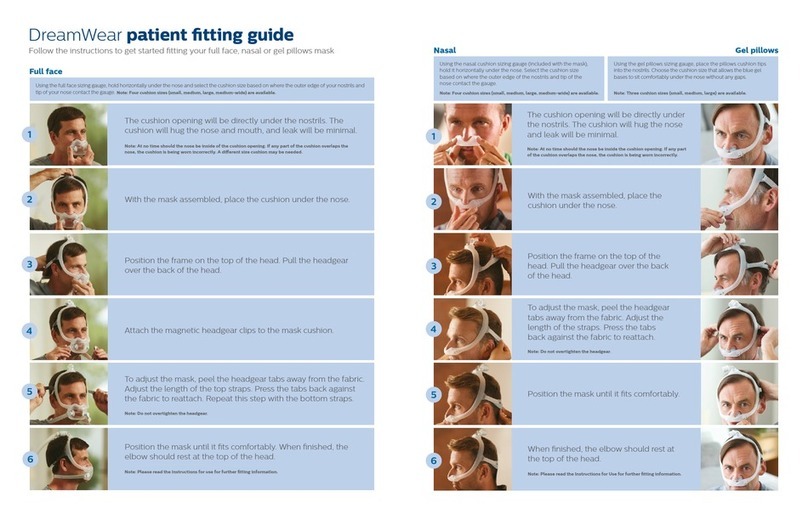
PHILIPS Respironics
PHILIPS Respironics DreamWear patient fitting guide
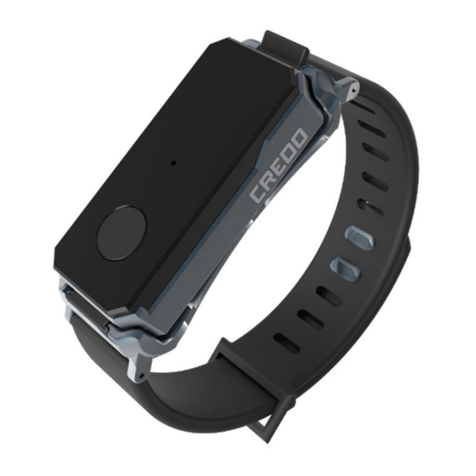
Credo
Credo CPRBAND user manual
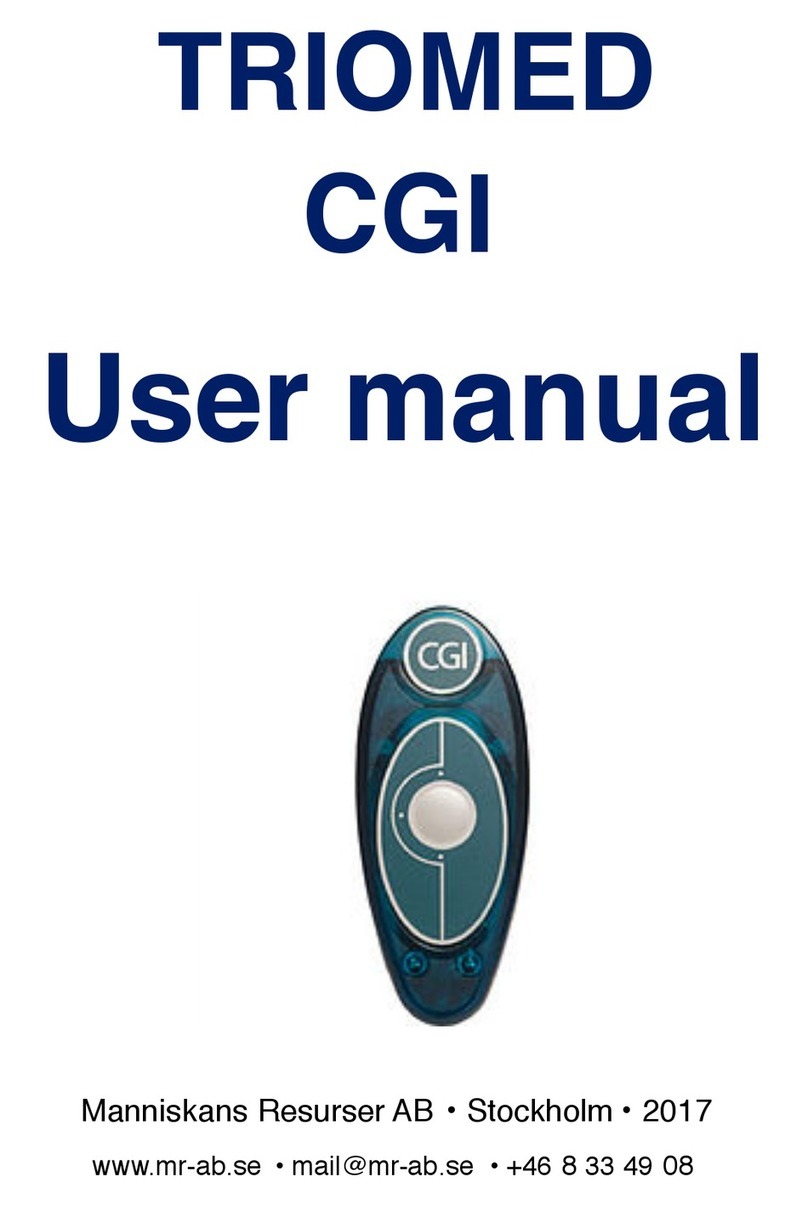
Manniskans Resurser
Manniskans Resurser TRIOMED CGI user manual

3A HEALTH CARE
3A HEALTH CARE MINIASPEED BATTERY PRO instruction manual

Blatchford
Blatchford Echelon VT Series Instructions for use
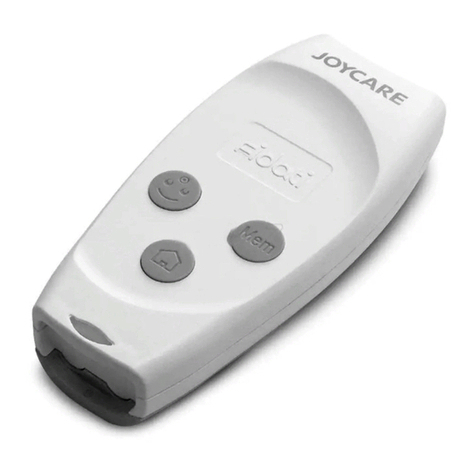
Joycare
Joycare JC-230 Fidati user manual

Thuasne
Thuasne TOWNSEND SpryStep Max AFO Instruction guide

Ambu
Ambu Aura40 Instructions for use
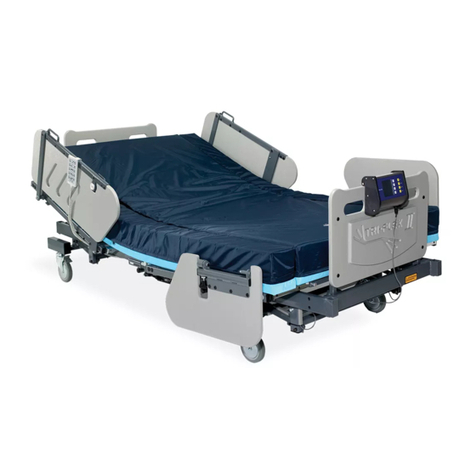
Burke
Burke TRI-FLEX II Operation manual
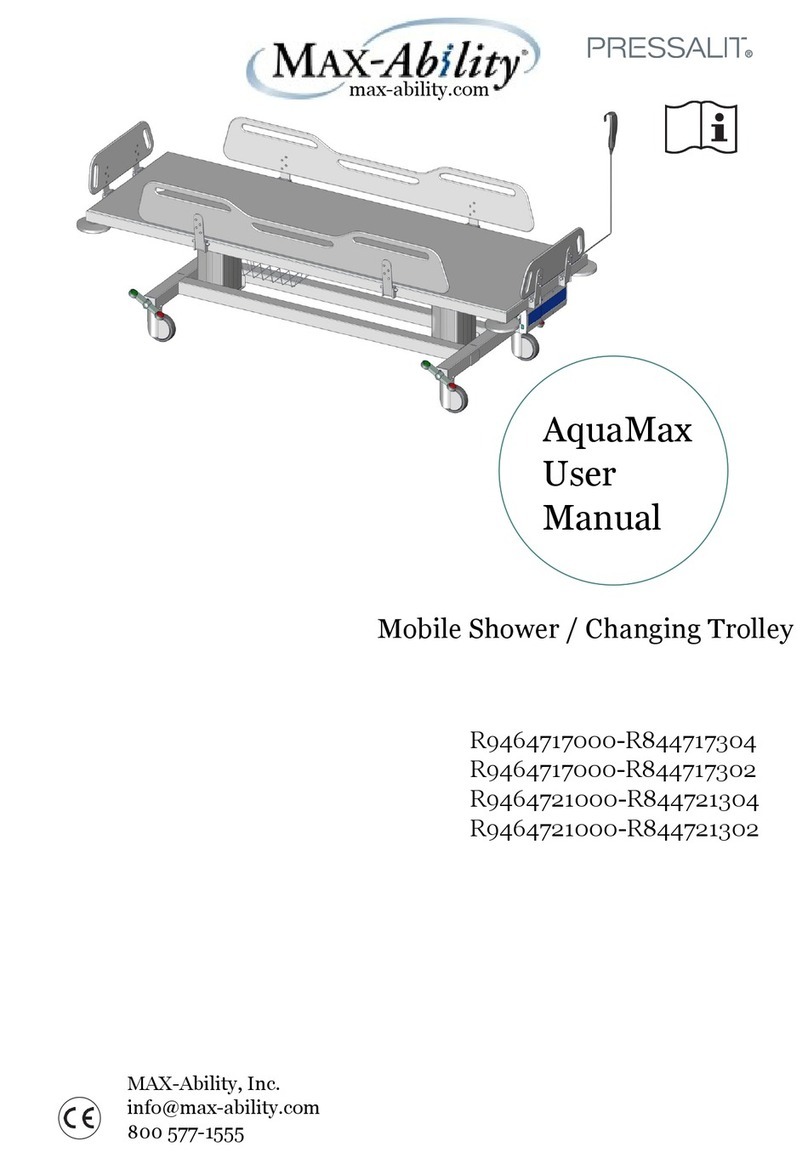
Max-Ability
Max-Ability Pressalit Aquamax user manual
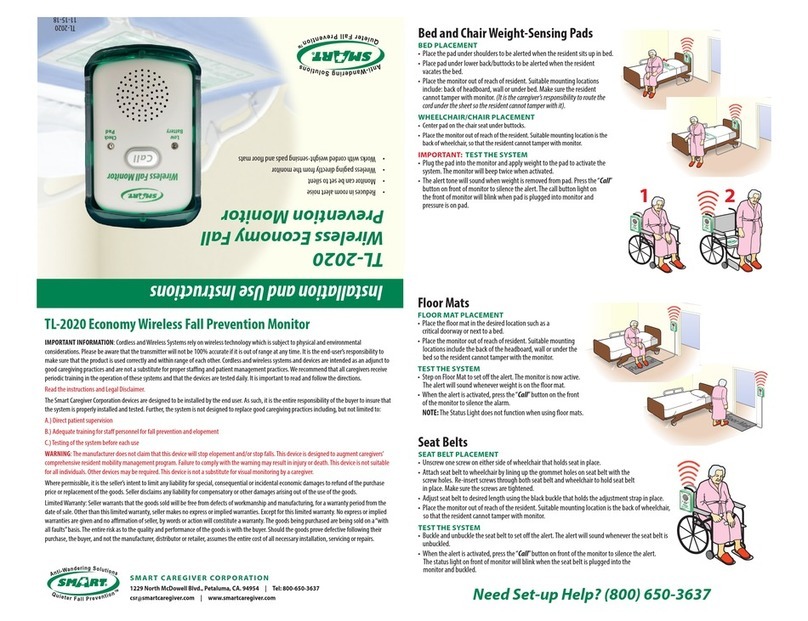
SMART
SMART TL-2020 Installation and use instructions and warnings

Direct Supply
Direct Supply Panacea Hot and Cold Packs owner's manual
